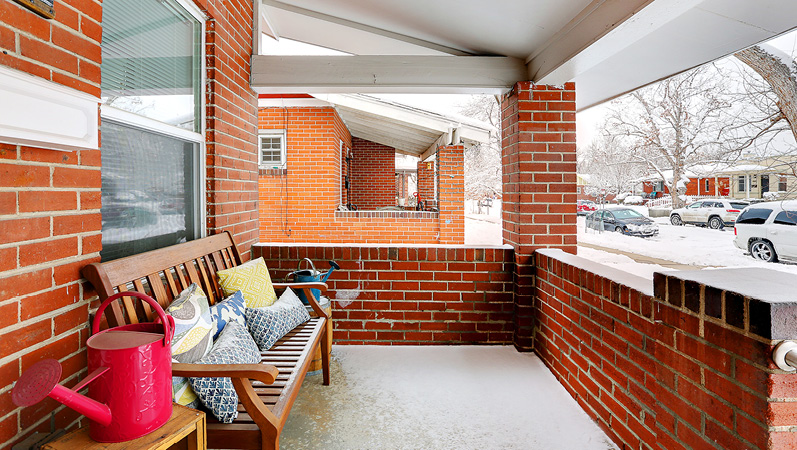How to Protect Your House Before Winter Arrives
In case you haven’t noticed, winter arrived early this year. Although it’s technically still fall, the snow cover clearly indicates otherwise. It’s time to start steeling yourself for colder temperatures and prepping your house for freezing temperatures. Take inventory of both your home’s operating systems as well as what’s going on outside to properly protect your belongings.
The biggest threats to the inside of your home come from the outside, namely in the form of cold and moisture. In other words, it’s important to examine the exterior of your house in order to protect the interior. It’s best to go from the top down, namely starting on your roof.
Examine Roof, Chimney, Gutters
As long as your roof isn’t too high or at a dangerous pitch, this is an easy DIY. Otherwise, find a reliable company to examine the roof, chimney and gutters/downspouts. Make sure there isn’t any snow atop the roof and wear sturdy shoes with good traction.
Pick a nice day, grab the ladder and do a thorough inspection of the roofing material to make sure there aren’t any loose or missing shingles or tiles. Even a few missing shingles can allow moisture to seep in and cause damage. Asphalt shingle roofs typically last 15-18 years so if your roof is older than that, you may want to consider replacing it.
While you’re on the roof, clean the gutters. This should be done at least twice a year, more often if you have numerous trees, to prevent “dams” from developing. Leaves, pine needles, dirt and roofing debris can quickly form blockages and cause water to overflow and drain into the foundation and basement. Use a leaf blower to blast out the gutters. Also, trim any branches that are near your house.
If the downspouts are clogged, force a water hose through the opening to dislodge the stoppage. Make sure all the downspouts are directing the water at least six feet from the foundation and that any pooling is well away from the house. Many downspout exits aren’t angled adequately to effectively divert water. Especially with older homes, you may want to consider some minor upgrades to your gutter system.
Finally, if you have a chimney, make sure it has a cover. Animals have been known to explore the nooks and crannies, and may sometimes cause trouble. If you have a wood-burning fireplace, make sure you have the chimney professionally cleaned at least every other year. You may want to consider cleaning it yearly should the fireplace be used frequently. Also, if the stone/brick work on the chimney is starting to show signs of wear, consider sealing the cracks to prevent further damage, especially with frequent freezing and thawing.
Disengage Hoses
Hopefully, you’ve cleaned out the flowerbed, garden and pots of dead flowers. Remember to disconnect all your hoses and store appropriately. Failure to do so can freeze pipes, causing indoor plumbing damage. Make sure the hoses are untangled, allowed to drain and stored properly. Furthermore, if you have a sprinkler system, you need to have it blown out to prevent broken pipes.
Inspect Siding/Eaves
Now is a good time to check the siding of your house. Check for cracks or holes in stucco, loose siding/shingles and whether paint is beginning to peel or weather. It still isn’t too late to make repairs before it gets too cold. Also, examine the eaves for wear and tear. This is also a great opportunity to re-evaluate the exterior of your home and consider improvements to increase the value of your home.
Furnace Check
If you haven’t done so already, have your furnace serviced. It’s best to be proactive when it comes to keeping your home warm this winter. A tune-up and safety inspection can be purchased for less than $100 and it’s well worth it. Check out discounts through online shopping and local business directories. Also, remember to change your furnace filters at least every three months (more frequently if you have pets). While you’re having the furnace inspected, have the hot water heater checked as well.
Insulation
If you have an older home, it’s prudent to check the amount of insulation in the attic. Having sufficient R value in the attic, walls and floors can significantly reduce your energy costs, both during the winter and the summer. Also, don’t forget to check ductwork and pipes that may be uninsulated in crawl space and other unheated areas.
Inspect Outdoor A/C Condensers
Blow out leaves and pine needles that have accumulated inside and near the outdoor A/C condensers. Many people believe you should cover the units in the winter to protect them from the elements. However, often mice, squirrels and other rodents can wind up taking shelter and causing damage to wiring and other components. Instead, it’s best to fashion a piece of plywood over the top of the condenser to keep the snow and ice from damaging the internal mechanisms.
Repair Driveway
Changing seasons, rising and falling temperatures, and precipitation can impact your driveway. Don’t ignore the signs of unhappy pavement. Linear cracks, spider cracks and crumbling edges are all signs of wear and tear. Fillers are a short term solution but many cracks will require a total surface evaluation. Make sure you get several estimates on any repair work and do your research to make sure you are ultimately getting a permanent fix.
(Editor’s note: This blog was originally published in November of 2018. It has been updated to provide current information).
